When choosing the next flower to incorporate into your thriving garden, you may consider how many petals you enjoy on a blossom. Some flowers only have one spectacular petal, like the calla lily, while others can have as many as fifty petals encircling their pistil.
If you’ve never thought about the number of petals, this article will get your wheels turning. This list will highlight all of the gorgeous flowers out there with ten petals.
Fittingly, the number ten symbolizes the cycle of life and universal creation. According to numerology, planting flowers with ten petals in your garden may bring you some good luck and confidence.
Thinleaf Sunflower
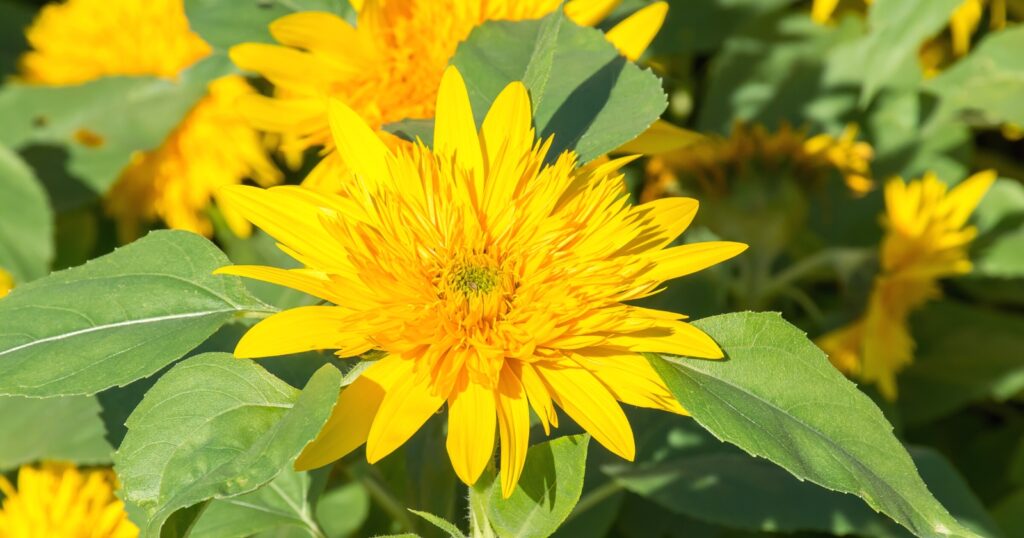
Scientific name: Helianthus decapetalus
- Plant Type: Perennial wildflower
- Geographic Origin: North America
- Plant Size: 2-5 feet tall, 2-5 feet wide
- Sun Exposure: Full sun, partial shade
- Plant Zone: 9
The thinleaf sunflower is a beautifully simple-looking flower with 8-12 yellow petals encircling a yellow center. The flowers grow with many bright green leaves, creating a bush underneath the bright yellow blossoms. The flower is often found in the woods near mountain ranges and is easy to happen across during a hike.
These stunning flowers are relatively easy to care for and can be grown in many home gardens under the right conditions. If you want a smaller version of the sunflower, this subtle plant is a wonderful choice.
Blazing Star
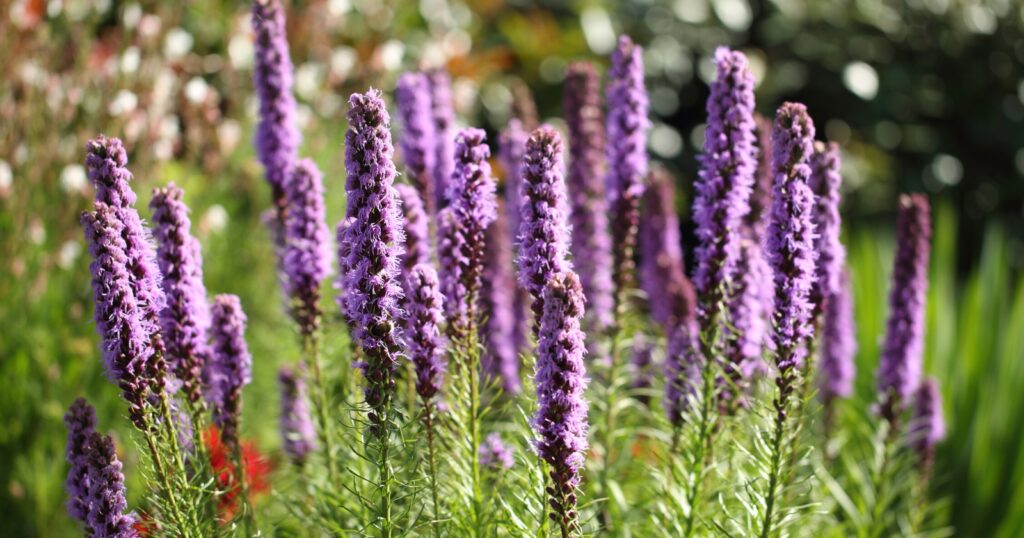
Scientific name: Liatris spicata
- Plant Type: Herbaceous perennial
- Geographic Origin: Canada
- Plant Size: 1-5 feet tall
- Sun Exposure: Full sun
- Plant Zone: 3-8
The blazing star flower also called the dense blazing star, or prairie gay feather, has ten unusual petals that climb up the stem to form an interesting look. The blossom looks like a fuzzy purple pine cone that sits atop the long green stem. This flower is a part of the sunflower family, although it has a wildly different appearance.
The thick violet spikes often poke through grassy fields and can be seen from far away. Indigenous populations even used the blossoms for medicinal purposes, such as pain relief and stimulants.
Barberry
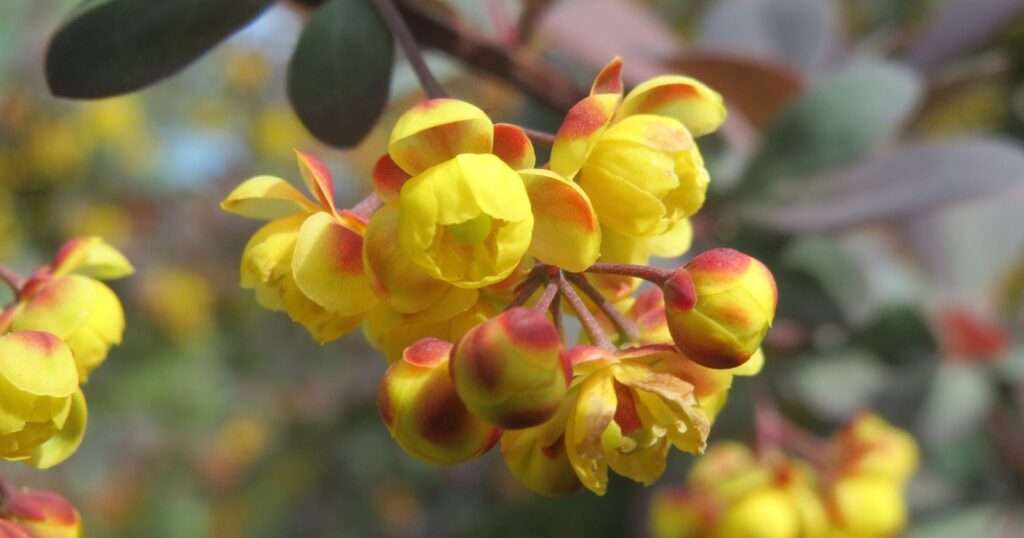
Scientific name: Berberidaceae
- Plant Type: Herbaceous perennial
- Geographic Origin: North America, Europe
- Plant Size: 7-10 feet tall, 3-5 feet wide
- Sun Exposure: Full sun, light shade
- Plant Zone: 4-7
The barberry flower is a tiny blossom with ten ruffled petals clustered together. The petals are often a light shade of orange or yellow and have a similarly colored center. Sometimes, as the blossoms mature, they can turn a light shade of purple.
The flowers grow above a large number of leaves that look like a bush. These flowers have often been consumed to reduce stomach problems in humans and help regulate digestion. These tiny flowers have a subtle appearance but can take up a considerable amount of space.
Cultivated Roses
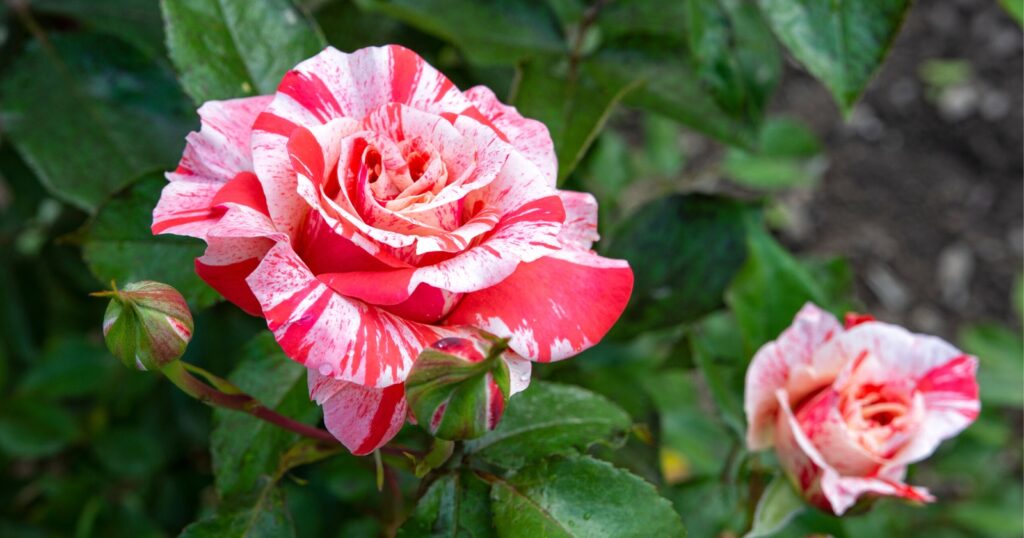
Scientific name: Rosa
- Plant Type: Perennial
- Geographic Origin: Asia
- Plant Size: 12-28 inches tall
- Sun Exposure: Full sun, partial sun
- Plant Zone: 5
Wild roses usually only have about five petals, but cultivated flowers have double that, averaging about ten petals per blossom. Cultivated roses are much more common than wild roses, as most roses that exist today have been grown and cared for by humans, whether in a home garden or elsewhere.
Roses are one of the most popular varieties of flowers because of their enchanting and delicate appearance. Roses grow in several different colors. But they are popular in shades of pink, red, and white. However, many cultures associate strong symbolic meanings with orange, black, or purple roses.
Sunflowers
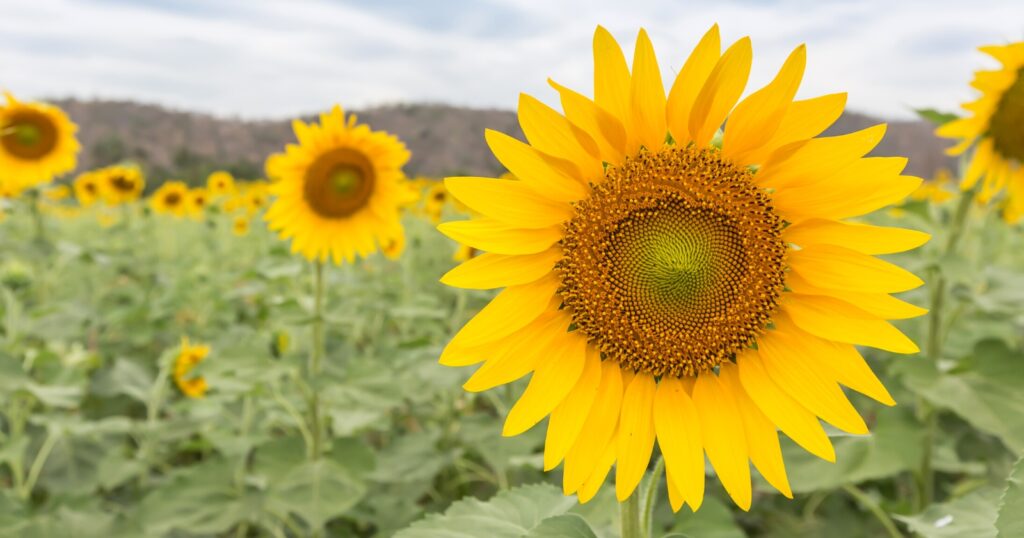
Scientific name: Helianthus
- Plant Type: Perennial flower
- Geographic Origin: North America, South America
- Plant Size: 5-10 feet tall
- Sun Exposure: Full sun
- Plant Zone: 4-9
Another incredibly popular flower, the radiance of the sunflower is practically unmatched. These massive flowers have so much color and presence that they are impossible to ignore when you walk by one. Unlike roses, sunflowers can still be found easily out in the wild if you know where to look.
Some sunflowers have ten delicate yellow petals attached to their massive pistils with short styles. But they can also have as many as 25 petals, but the petals always grow in multiples of five, exemplifying how incredible nature can be. They are known for their longer bloom times depending on your hardiness zone.
Passionflower
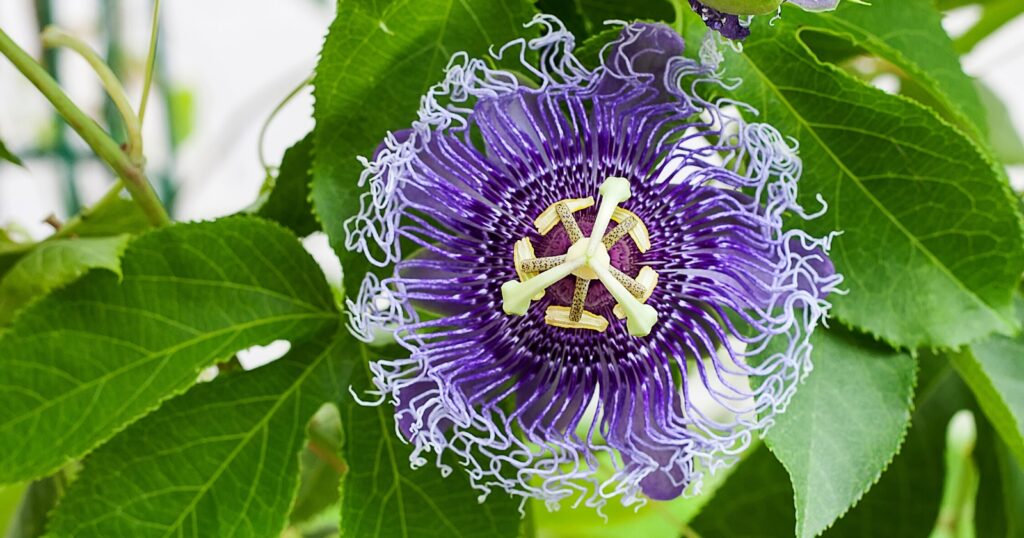
Scientific name: Passiflora incarnata
- Plant Type: Perennial vine
- Geographic Origin: North and South America
- Plant Size: 6-30 feet tall, 3-6 feet wide
- Sun Exposure: Full sun, partial shade
- Plant Zone: 6-10
The passionflower has two overlapping circles, each with five petals for a total of ten on most blossoms. This flower is exquisite and relatively rare, with a lovely purple color in the petals and chartreuse center. People also refer to the flower as the maypop, purple passionflower, true passionflower, wild apricot, or wild passion vine.
The stamens of this flower are genuinely unique, having a wild and flashy look. The flowers are beautifully intricate and enchanting. If you want something exotic-looking and spectacular in your garden, it’s hard to go wrong with the passionflower.
Field Fleawort

Scientific name: Tephroseris integrifolia
- Plant Type: Perennial herb
- Geographic Origin: Europe, Siberia, Iran
- Plant Size: 8-10 inches tall
- Sun Exposure: Full sun, partial sun
- Plant Zone: 4
Field fleawort is an adorable single-stemmed flower and is part of the daisy family. Three blossoms grow off a single stem, creating small clusters for a unique appearance. Each bloom on the plant has ten petals, which can be vibrant yellow or pale orange.
Currently, field fleawort, also sometimes called the grassland daisy, is an endangered species. Artificial agriculture is threatening the species, and sadly, this flower may not be around for much longer. But they are simple to care for and could flourish in your home garden with enough love and attention.
Hops
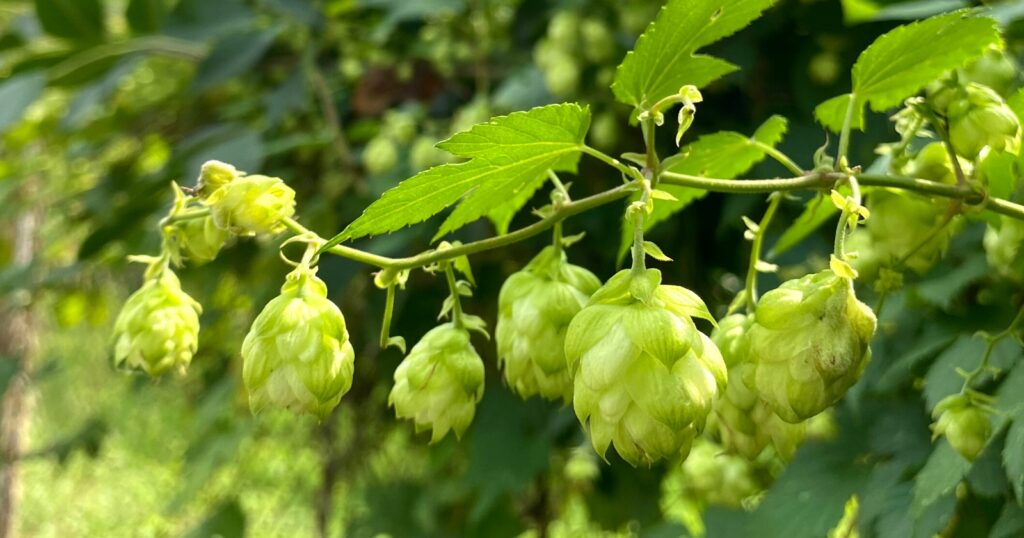
Scientific name: Humulus lupulus
- Plant Type: Flowering bine plant
- Geographic Origin: Europe, Asia, North America
- Plant Size: 15-20 feet tall, 3-6 feet wide
- Sun Exposure: Full sun, partial shade
- Plant Zone: 4-8
Hops? Like beer? Yes! Hops produce flowers with ten petals in a gorgeous green shade that are tightly packed together to form a small bulb that drops down from the plant. These flowers are incredibly aromatic and add that delightfully bitter taste to beer through a fermentation process.
They climb like a vine, but because of the downward angle the flowers grow at, they fall under the classification of a bine plant. They are also known to attract wild butterflies, making your garden abuzz with wildlife.
Groundsel
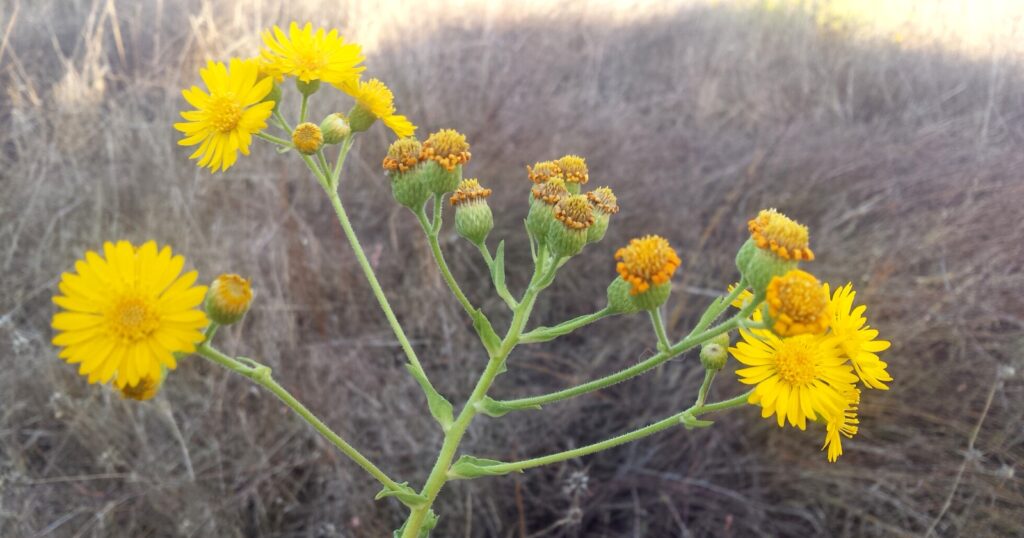
Scientific name: Senecio vulgaris
- Plant Type: Annual herb
- Geographic Origin:
- Plant Size: 14-16 inches tall
- Sun Exposure: Full sun to full shade
- Plant Zone: 6
Common groundsel, also known by the whimsical name old-man-in-the-spring, is a common wildflower with yellow disc florets. The flowers can have eight to twelve petals, but most have ten. The cylinder-shaped flower heads always have yellow petals encased in a green cover before it matures.
Each flower is about the size of a pinky finger with ten petals and small little spikes clustered together. Sometimes they develop fluffy white spheres that look just like dandelions. This flower can be misconstrued for dandelions often, but they’re not technically a weed.
Canadian Goldenrod
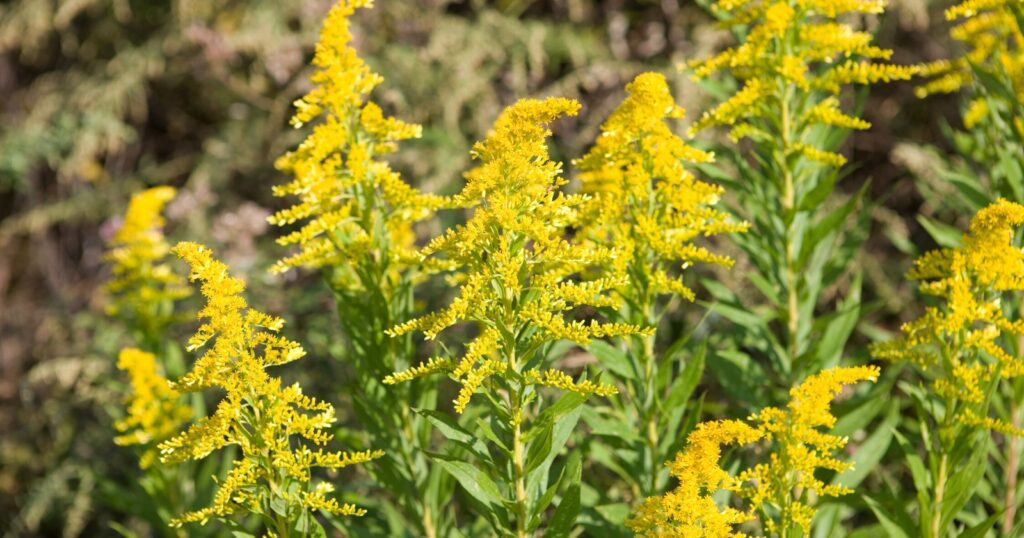
Scientific name: Solidago canadensis
- Plant Type: Herbaceous perennial
- Geographic Origin: Canada
- Plant Size: 2-6 feet tall
- Sun Exposure: Full sun
- Plant Zone: 3-9
The Canadian goldenrod, which is unsurprisingly native to Canada, has a unique shape to its blossom. The petals are lined up beside one another and outstretch away from the step. Each flower has ten petals, and each stem can have as many as fifteen blooms that stagger up the stem, like steps on a ladder.
The petals are yellow, but the stems also have tiny fuzzy white hairs on the underside of each branch. Where these flowers grow, they tend to grow in abundance, so if you plant them in your garden, expect them to flourish all over the place.
Sneezewort
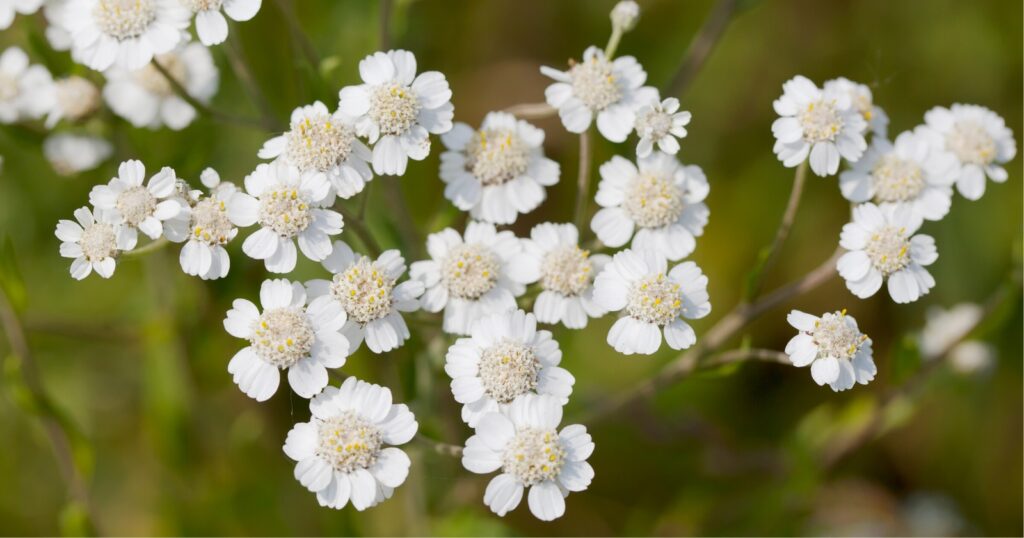
Scientific name: Achillea ptarmica
- Plant Type: Herbaceous perennial
- Geographic Origin: Europe, North America
- Plant Size: 12-25 inches tall
- Sun Exposure: Full sun, partial sun
- Plant Zone: 3-8
Sneezeworts are one of the most beautiful flowers with ten petals despite their name. They grow in soft white with ten round petals encircling a pale yellow center. They have a ruffled and delicate appearance that makes them popular in home gardens, but they require extra care and attention.
The name ‘sneezewort’ was given to the flower because if you inhale too much pollen when taking in the sweet aroma, it will make you sneeze a lot. But these snowy-white flowers smell so sweet, and people usually think the sneezing is worth a sniff.
Wrap Up
If you love the symmetry of a ten-petaled flower, every one of these plants will make a beautiful addition to your home garden. Whether you choose something outside the norm, like the common hops, or something extravagant and exotic, like the passionflower, these will bring a new flair to your yard.
Some of the flowers on this list are unique and dazzling, while others are simple and sweet. Whichever type of plant you love to grow, one of these flowers with ten petals will add a new level of beauty to your garden or yard.

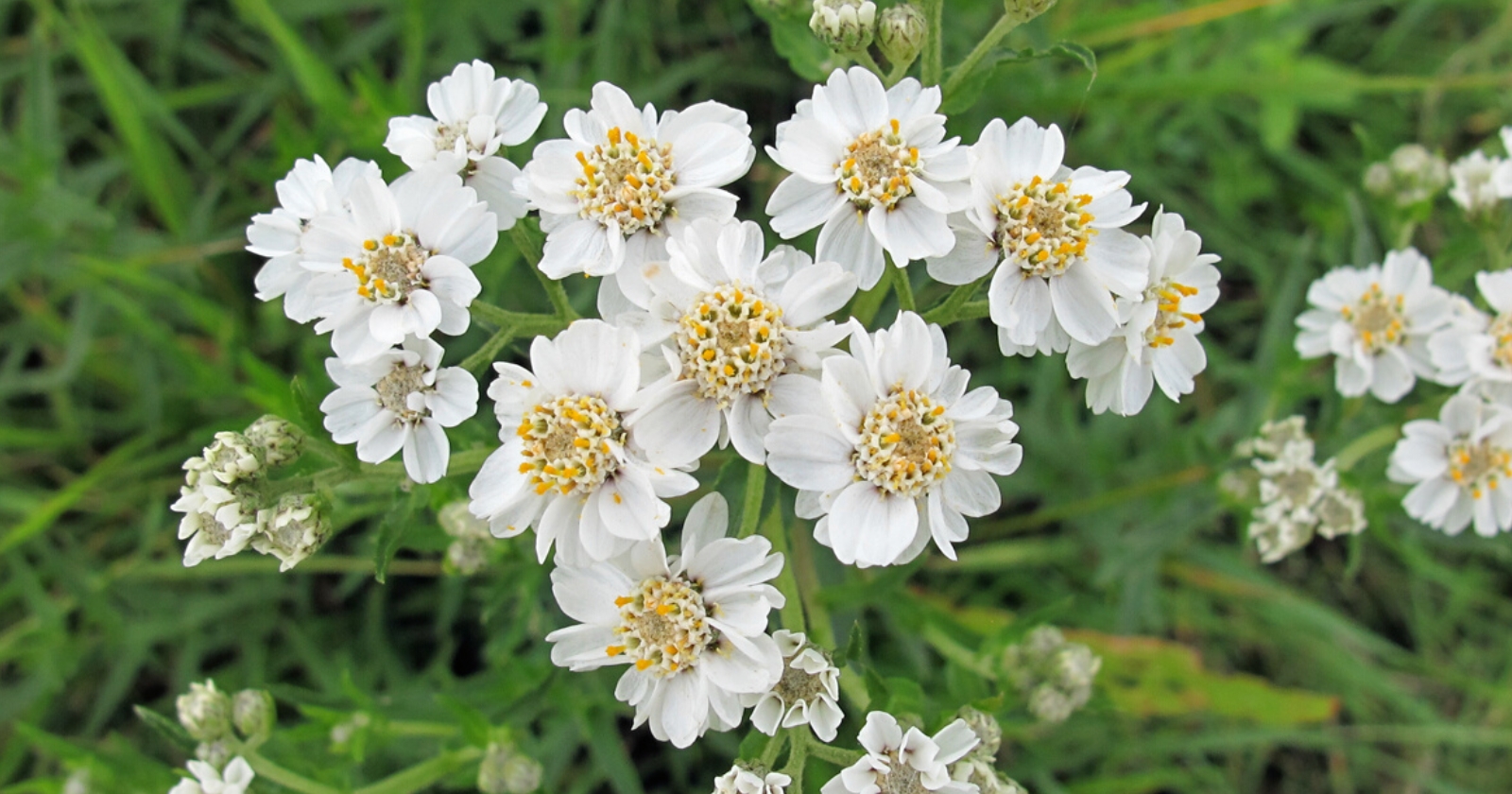
Leave a comment